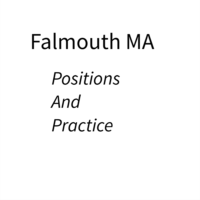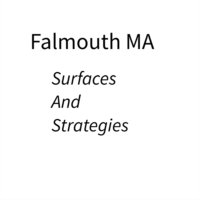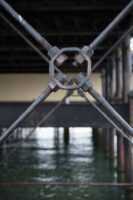Location – Porthleven, Cornwall
Intent
Following feedback during the different portfolio reviews in preparation for continuing the development of images for my Final Major Project I decided to visit Porthleven Harbour to shoot at sunrise and sunset to explore how the different lighting conditions impacted my images to help refine method for the final 4 months I had allocated for that aspect of the module.
In addition to experimenting with light I decided to shoot with my digital SLR and Mamiya 645 taking advantage of the machine developing at the university to reduce processing time.
Equipment Used
The days shooting made use of two different camera setup both tripod based shooting
Canon 5Ds with 16-35mm f/2.8 lens and 70-200mm f2.8
Mamiya 645 Super with 45mm f2.8, 80mm f/4 and 105-210mm f4.5.
Methodology
The idea was to shoot landscape images with both cameras plus a few images that focus on details around the harbour area. For the Mamiya I selected 3 films to B&W, Colour Negative and Colour Transparency.
The first series of images were taken around dawn using different cameras and different films backs.
During the day return to Falmouth develop the films and then repeat the process at sunset.
The perform a comparison between the different cameras and times of day to refine the image capture strategy for future visits to the landing stages along the Essex coast.
Images
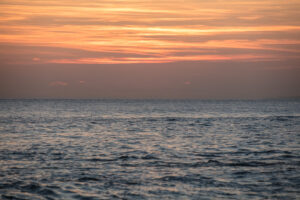
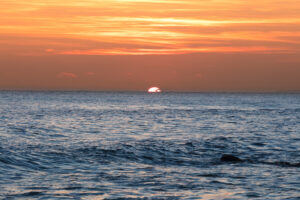
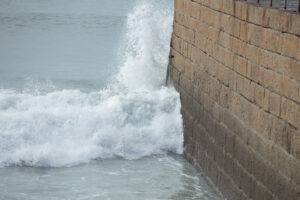
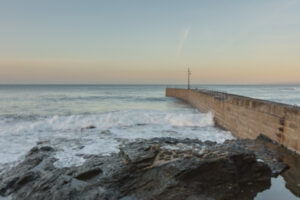
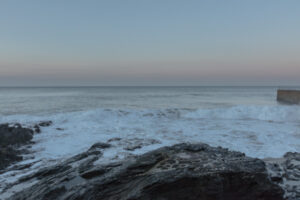
Research References
The seascape images and the crashing waves draw on reference from Japanese woodblock images and the work of Hiroshi Sugimoto with his seascapes (Sugimoto, 2015). The landscape photographs have a deadpan aesthetic that distances the reader from the subject positioning the work towards the fine art end of the photographic spectrum.
Assessment of outcome
The 5 images include in this entry are all from the DSLR as films shoot in the Mamiya did not develop correctly. Later investigate concluded that the use of aperture priority mode and auto metering on the viewfinder had resulted in the images being incorrectly exposed resulting in 3 rolls of underexposed film.
The sunrise and sunset images are very different in look and the feeling that they invoke. The light post sunset I feel better suits the mood that I am looking to convey in the project which is a transition period of the present and the imaginary state of the future. I therefore feel that at the current time the period post sunset know as blue hour will provide the correct tonal range and help reduce the colour range within the images drawing a parallel to the use of black and white photography. The reduction of colour allows the reader to focus on tonal variations across the image as a whole rather than being distracted by variation in colour that is present in the images above captured close to sunset.
Based on this experiment i have decided refine my equipment to a single camera the Canon 5Ds with the Sigma 35mm f1.4 lens mounted on a trip using a remote shutter release.
References
- Sugimoto, H. (2015). Hiroshi Sugimoto. Stop time. Milano: Skira Editore.

